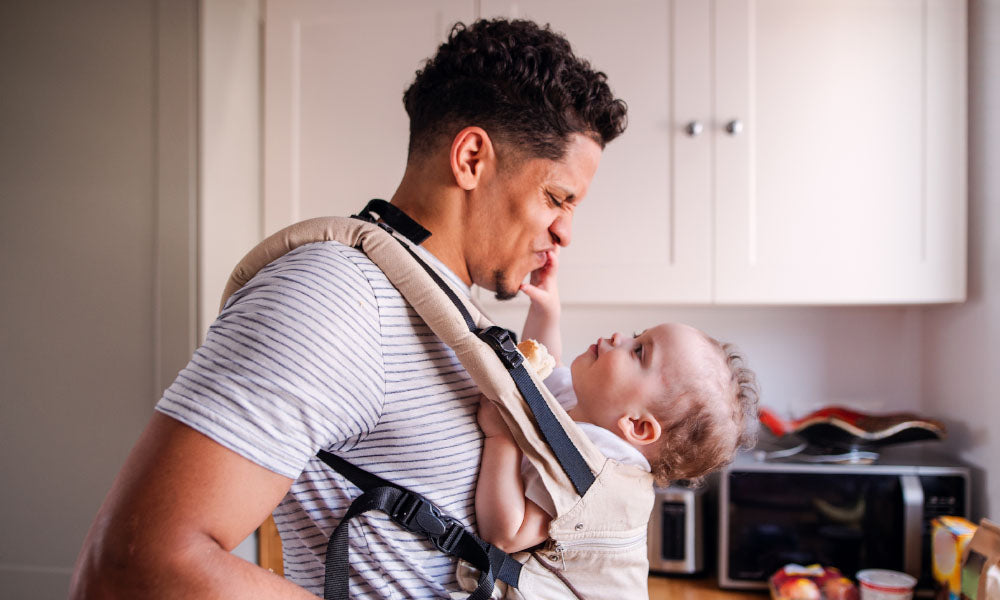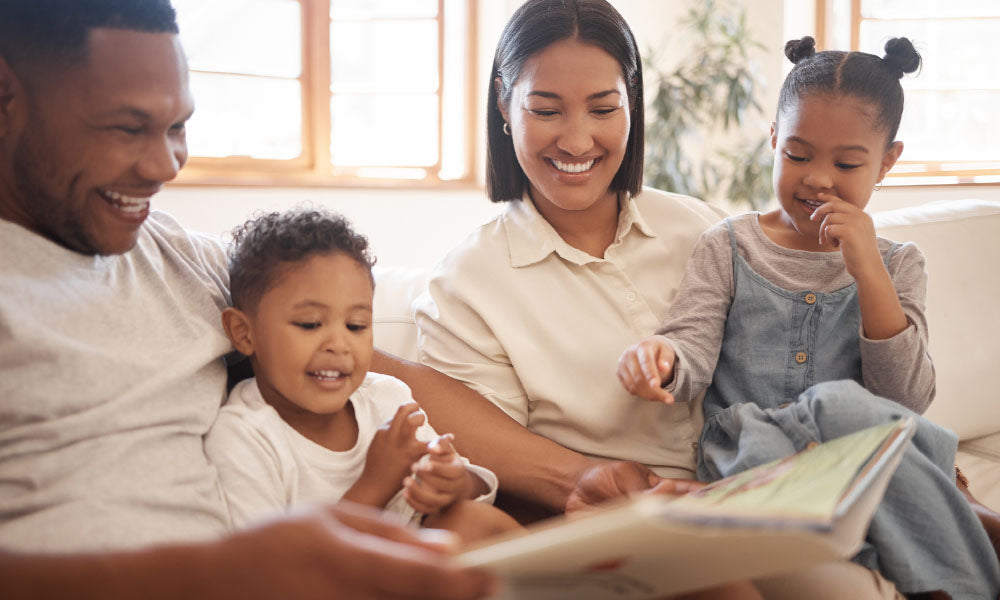You’ve checked off the crib, the stroller, maybe even a changing table from your baby registry. Then your friend drops the “Oh, you HAVE TO get a good baby carrier! You won’t get anything done without one!” and suddenly you’re right back to feeling completely lost and unprepared. Your friend isn’t wrong - snuggling on the go allows you to be more mobile, maintain use of both hands, and keep your tiny boss happy.
Get the right one, and you’ll feel like a superhero as you accomplish all your daily tasks while bonding with your new best friend. There are a lot of options both in brand and type. We’ll break them down so you can start your search with confidence.
When it comes to baby carriers, it’s important to consider your needs as a family. Different types will work best depending on your activities, preferences, and body types.
Here are some questions to help you start narrowing down which type of carrier will work best for you:
- Will you be the only person wearing the baby, or will you be trading with another caregiver? If there will be more than one person using it, how different are your body sizes/ shapes?
- Do you tend to stay around the house most of the time or are you constantly on-the-go?
- Are you interested in getting to know the intricacies of more complex carrier styles or do you want a simple “snap and go” style?
- Does your budget support purchasing a few different carriers for different activities, or do you need one all-purpose carrier?
- What is the weather like where you are? Think about which season you will have a newborn, infant, and toddler.
Now that you have a general idea of what you’re looking for, let’s dive into the options!
Wraps
Wraps are one of the oldest ways to wear a baby, and have stuck around for good reason. All you need is a long piece of fabric and a little practice with the wrapping technique. It takes a few tries to get used to the set up, but once you have the hang of it, it’s a great tool.
Pros: Wraps are easy to bring anywhere since they don’t take up much space. Most are made of comfortable and breathable materials. And since they have no pre-set fasteners, they can be instantly adjusted to any body type.
Cons: There is a learning curve here, and you will have to practice a bit before you’re ready to use the wrap with your baby. If there are a few wearers, each person will have to get comfortable with the process. Many of the more stretchy wraps only support small babies, so it might be a short-term piece of gear.
Slings
The sling is another method of baby wearing that has been used for generations. It consists of a piece of fabric with two hard rings at one end. These are a bit simpler to set up than a wrap, but still require some practice to get comfortable with positioning. They are often made of beautiful fabrics, so they can be an aesthetically pleasing compliment for stylish parents.
Pros: Slings are easy to travel with, lightweight, and can be used in multiple positions. Most slings can also be adapted for older babies and toddlers quite well.
Cons: They require practice to get comfortable setting up. Also, slings are not extremely supportive for the wearer, so they are best used for short periods of time especially if the wearer suffers from neck, shoulder, or back pain.
Buckle Carriers
These are a very popular style of baby carrier because of the ease of use and back support they offer. Most buckle carriers have padded straps and back support, and a more cushioned body piece for the baby. Some offer only one position, but there are many that offer front, hip, and/or back carrying options as well. Buckle carriers are available in a range of colors, styles, and price points.
Pros: Easy to set up, and quick to put on once adjusted for your size. More padding in the straps can make these more comfortable for long-term wear. They can also be great for active families since they can be worn for longer periods of time and adapted to different activities with the different position options. Buckle carriers also often fit a range of sizes, so you can use them for small babies as well as older infants and toddlers.
Cons: These can be bulky due to the padding and structure, and can be uncomfortable in hot climates. Some buckle carriers require a few adjustments to size to your body, so it can be time consuming to swap between wearers if your sizes are quite different.
Wearables
A fairly new type of carrier, wearables are shaped like clothing with a pocket for your baby. They are usually worn like a shirt or a vest, and then the baby is inserted into the pocket or carrying space.
Pros: Little to no set up required. Simple to put on and no adjustment needed.
Cons: Typically, these only work for young infants as they grow out of the pocket quickly. Additionally, the wearable comes in one size only - like purchasing a shirt. So, if you have multiple wearers (or need to do laundry), you will have to purchase multiple carriers.
Steel-framed Packs
Steel-framed hiking packs have gained popularity with families taking their young children hiking. Built like a backpack with a steel support, these are intended to provide more back support and allow your infant to see the scenery as you walk.
Pros: These can be used to carry larger infants and toddlers. The seat structure is comfortable for them to sit for longer. The frame keeps the child from directly resting on your back, providing more ventilation for active endeavors.
Cons: Steel-framed packs take up quite a bit of space (although some are more collapsible than others). They don’t work for younger babies as they requires the rider to be able to self-support. These can also cause back pain for some wearers, especially those with pre-existing lumbar spine concerns.
The Takeaway
The best way to determine which carrier will be right for you is to try them out. Many cities have local baby wearing clubs which offer advice, tutorials, and have different carriers for you to try on. If you can’t find a formal baby wearing group, ask your friends about what they used. Even if they are still using their carrier, they may be willing to show you how it works and let you try it on.
Many specialty baby stores and even some big box retailers have samples for you to see and feel in person. And there is absolutely no shortage of opinion sharing online (as usual!). Don’t be afraid to check out some forums and take in other seasoned baby wearing veterans’ opinions!
A quick intro before we go. I’m Kathryn Farrell, the creator of the CO Carrier. The CO Carrier was designed to combine the lightweight feel and snug fit of a wrap or a sling with the ease of use and versatility of a buckle carrier. The patent-pending design is an International Hip Dysplasia certified Hip Healthy Product, as well as recommended by Physical Therapists to be more spine-friendly for the wearer than traditional buckle-style carriers. It fits newborns through toddlers (7-35 lbs) with no insert needed. You can learn more on our website, or on Instagram, Facebook, and TikTok @cofamilygear.



